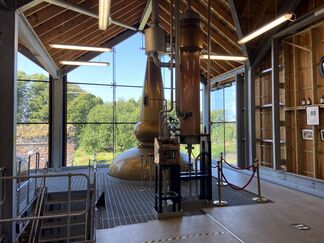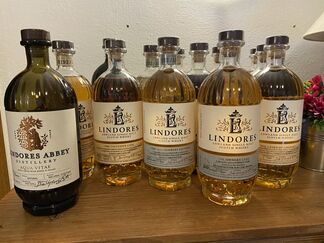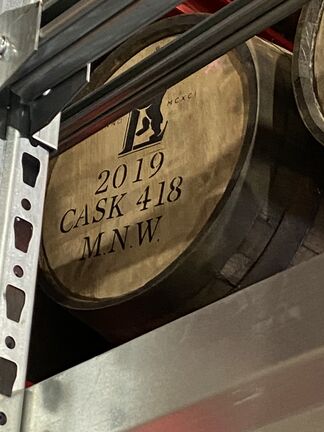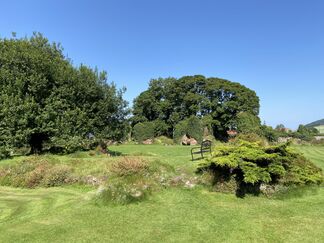
Lindores Abbey Distillery
The Spiritual Home of Whisky
Imagine sitting in your lounge reading the newspaper when the doorbell rings. You open the door to find a stranger who asks if he can take a look around your garden. Why not, you think. And after an hour or so, the doorbell rings again. The same chap is standing at your door and hands you his business card. Michael Jackson. No! Not the singer, the wine and whisky expert. The guy that writes all the books. And then he tells you that you should be expecting a few more people arriving at your door to look around since his next book will confirm that the first ever records of distillation in Scotland puts the location right in your garden.
But his did happen to a gentleman called Andrew McKenzie Smith. I am not sure it happened exactly like that, and the garden in question is probably not exactly like yours. His home is in Newburgh, Scotland. His “garden” contains the ruins of Lindores Abbey. Michael Jackson included Lindores Abbey as where the whole Scotch Whisky story started in his book “Scotland and its whiskies” in May 2001.
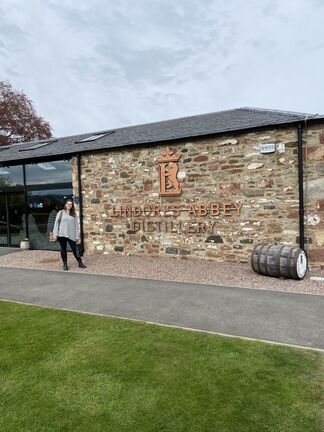
The Records
So, what caused Michael Jackson to ring Andrew’s doorbell? Well, he had done quite a bit of research and found the Exchequer roll of 1494 in which was listed (translated from Latin); “And by payment made to Brother John Cor by precept of the comptroller, as he asserts, by the Kings command, to make aquavite within the period of the account, 8 bolls of malt.”. Dated 1st June 1494, this is the earliest written reference to whisky making in Scotland. Deeper research found the order “To Friar John Cor, 8 bolls of Malt, wherewith to make Aqua Vitae for King James IV”. Aqua Vitae is a name which evolved into Whisky. Friar John Cor was at Lindores Abbey.
Jacksons book was released in May 2001. On page 170 was a lovely picture of the Abbey. The chapter starts: ‘For the whisky-lover, it is a pilgrimage.’”
For Andrew’s family, that was the first time they became aware that the ruined abbey in their back garden had a special significance – one of particular importance in the whisky world. Andrew said at the time “I thought it’s nuts to have this in your garden and not try to do something with it.”. A mega understatement in my view! So of course, he decided to build a whisky distillery! And a fine job he has done!
The Birth of Lindores Abbey Distillery
Andrew summoned the support of whisky production legend, Jim Swan, to help design the distillery and bring the product to life. Jim was most respected and helped give birth to many distilleries in Scotland and beyond. He was a chemist and really delved into the depths of the whisky production process at every stage. I use the past tense here because Jim sadly died in February 2017 before being able to see the result at Lindores Abbey. But more about him in a later Blog entry!
The planning of the distillery at Lindores Abbey was long and detailed. Finally, in February 2016 – ground was broken for the development of the farm buildings into a new state of the art whisky distillery. As part of the archaeological work needed before the distillery could be built, a distillation vat was discovered in the ruins, along with evidence of whisky production. The remains of the still are preserved for display in the ruins.
Interestingly, the distillery being built on the site of the farm, puts it across the road directly opposite the Abbey ruins. The Abbey sits in the Highlands Whisky regions, and the distillery is a Lowlands distillery.
The first mash of Lindores spirit was made by Gary Haggart, Distillery Manager on 6th December 2017. And on 13th December 2017, the spirit stills (named Poppy and Gee after Andrew’s daughters) had their first run. On 20th Dec 2017 the first casks were filled. 18 Old Forester Bourbons and 2 Monbazillacs in total were filled with 3975 bulk litres into cask at 63.4% strength.
Lindores Abbey Whisky
Lindores Abbey first spirit officially became whisky on 20th December 2020. 3 years after being produced. And it is a very fine dram indeed. It is hard to believe that it is so young. The bottles are a very nice shape too. The core whisky from Lindores is given the name MCDXCIV (1494 in Roman numerals). It is matured in a combination of bourbon, sherry and wine barrique casks beautifully combined to make a light and fruity whisky, typical of the Lowlands.
Colour: Golden
Nose: Elegant, soft, mellow vanilla, caramel notes playing with orchard fruits and sweet pear drops. Reminiscent of toffee apples!
Palate: Smooth with a creamy texture and a perfect balance of mellow vanilla, dried fruits, citrus touches with a hint of spice.
Finish: Medium length, delicate but lingering finish.
The distillery also produces a very fine herbal spirit called Aqua Vitae. And if you visit the distillery, you can perform alchemy and mix your own version of Aqua Vitae.
They are also producing some very fine cask expressions using sherry, wine and port casks as well as the core range. And the price of the core whisky is very reasonable for something with such a history, with a price tag of under 50€ a bottle. Lindores has also produced a number of limited single cask whiskies which are a tad more expensive but well worth it if you can get your hands on a bottle!
The Distillery
The whole place has been built in style. A beautiful mix of old and new and excellent use of wood in the buildings. Lindores Abbey hosts visitors extremely well. They have a range of tours, cater for individual visits, weddings, and corporate events. I can highly recommend a visit.
I have had the pleasure to visit Lindores Abbey a few times now. I became a joint cask owner with one of our daughters and have made the acquaintance of Andrew McKenzie Smith and his lovely wife, Helen. They have a noble vision of the future of the ruins of Lindores Abbey, also having created a preservation society. Preservation society members get the chance to plant an apple tree in the Abbey orchard. And how many members are there? It is limited to 1494....
